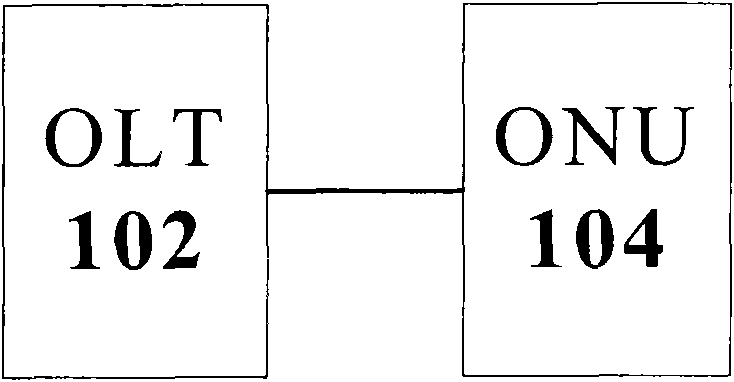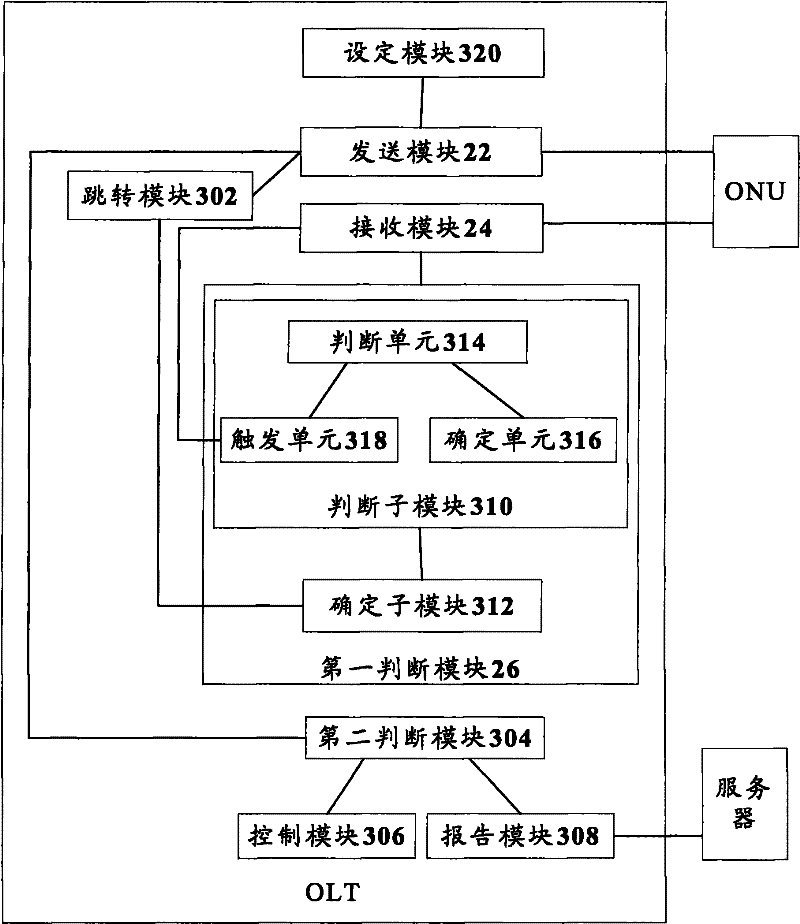Time synchronization processing method and system used in passive optical network and OLT (Optical Line Terminal)
A passive optical network, time synchronization technology, applied in the field of communications, can solve problems such as affecting TDM, failure, and time asynchrony
- Summary
- Abstract
- Description
- Claims
- Application Information
AI Technical Summary
Problems solved by technology
Method used
Image
Examples
example 1
[0088] This example uses an Ethernet passive optical network (Ethernet PON, referred to as EPON for short) as an example to illustrate the implementation process of the present invention, wherein the OLT utilizes the MPCP synchronization mechanism and ranging characteristics of EPON conforming to the IEEE802.3 specification to realize the OLT and ONU time synchronization between the OLT and ONU, and use MPCP or OSSPDU message to transfer time information between OLT and ONU, that is, use MPCP or OSSPDU message as time synchronization message. Figure 5 is an EPON network networking diagram according to an embodiment of the present invention, such as Figure 5 As shown, the OLT is connected to five ONUs (ONU_1 to ONU_5) through an Optical Distribution Network (ODN for short).
[0089] Image 6 is a schematic diagram of the process corresponding to the OLT in the time synchronization method according to the preferred example 1 of the embodiments of the present invention, as sho...
example 2
[0110] This example uses EPON as an example to illustrate the implementation process of the present invention. The MPCP synchronization mechanism and ranging feature of EPON are used to realize the time synchronization between the OLT and the ONU, and the extended OAM message is used as the time synchronization message between the OLT and the ONU. transfer time information. This example uses Figure 5 The shown EPON network networking.
[0111] Figure 8 It is a schematic diagram of the process corresponding to the OLT in the time synchronization method of the preferred embodiment 2 according to the embodiment of the present invention, such as Figure 8 shown, the process includes the following steps:
[0112] Step 801: After measuring the ranging of each ONU, the OLT obtains the round-trip delay RTT of each ONU, that is, ranging information, and sends the ranging information to each ONU through a unicast message.
[0113] Step 802, when the ToD needs to be synchronized, t...
example 3
[0133] This preferred example improves the prior art and adds a confirmation mechanism. For the time synchronization message sent by the OLT, the ONU will send an acknowledgement message corresponding to the time synchronization message. Figure 10 is a flow chart of the processing method for time synchronization in the PON according to the preferred embodiment 3 of the embodiment of the present invention, such as Figure 10 As shown, the method includes the following steps:
[0134] Step 1001, the OLT sends a time synchronization message to the ONU, and waits for the ONU to return a valid confirmation message.
[0135] Step 1002, if the OLT receives the confirmation message returned by the ONU within the predetermined time T, then compare the parameters carried in the message with the parameters in the time synchronization message sent last time, and determine the returned confirmation message and the sent time synchronization message. match. If it can match, it is conside...
PUM
 Login to View More
Login to View More Abstract
Description
Claims
Application Information
 Login to View More
Login to View More - R&D Engineer
- R&D Manager
- IP Professional
- Industry Leading Data Capabilities
- Powerful AI technology
- Patent DNA Extraction
Browse by: Latest US Patents, China's latest patents, Technical Efficacy Thesaurus, Application Domain, Technology Topic, Popular Technical Reports.
© 2024 PatSnap. All rights reserved.Legal|Privacy policy|Modern Slavery Act Transparency Statement|Sitemap|About US| Contact US: help@patsnap.com










